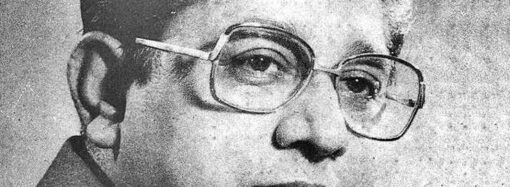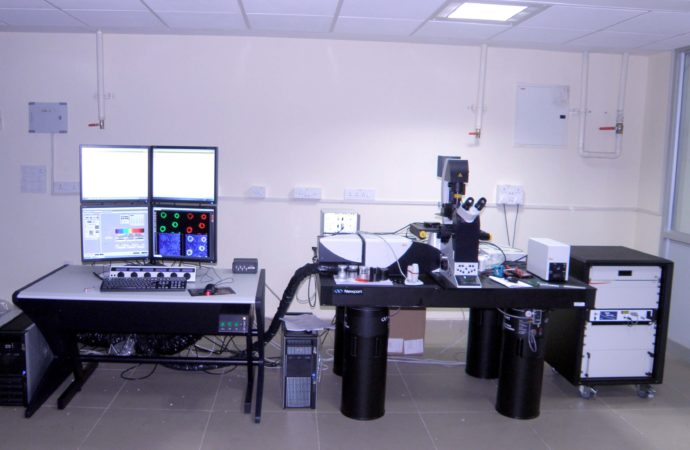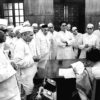– By Professor Bhallamudi Ravi
The recent approval of the Union Cabinet to set up four medical device manufacturing parks with an outlay of Rs. 100 crores each is seen as a welcome move to encourage and support biomedical innovation and entrepreneurship in India. Medical devices are needed for screening, diagnosis, monitoring, treatment, surgery and rehabilitation of patients. The need for better outcomes (more complete recovery from disease), higher reliability (accuracy and repeatability of diagnosis or treatment), safety (less injury or adverse effects) and efficiency (less time and effort) fuels innovation in this field.
Such devices also need to be more affordable, adaptable, and accessible in countries like ours where per capita expenditure on healthcare is less than 1 per cent of that in USA, which leads global production as well as consumption of medical devices. Low-cost yet high -quality devices can be developed indigenously by leveraging new technologies such as 3D printing, artificial intelligence, smart sensors and robotics. Indeed, healthcare appears to be witnessing the largest number of start-ups after e-commerce owing to the exponentially growing requirement of protective gears for healthcare professionals and the dire need of a preventive vaccine in the wake of increasing COVID-19 cases in India.
The journey of medical device or product innovation starts from bedside as a biomedical requirement in hospital, goes to bench for product engineering, reaches business circles for commercialisation, and then comes back to bedside for application. Critical steps during this journey include clinical need validation, proof-of-concept, detailed product design, rapid prototyping, pilot batch manufacturing, lab-testing, human clinical trials, regulatory approvals, mass production, and distribution. These require close collaboration among experts from multiple disciplines such as medicine, biomaterial instrumentation, mechanical engineering, product design, manufacturing, electronics, software support, and management.
The total lead time to traverse through these stages can take 3-4 years for even smallest of low-risk devices or drugs. For instance, a start-up from BETIC, Ayu Devices, IIT Bombay identified in 2015 the need of a digital stethoscope in the landscape of rural healthcare. A doctor from a far-flung hospital in village, who wanted to avoid sending his patients to city for second opinion by recording and sending the stethoscope sounds to expert doctors, was the first one to identify this need. The proof-of-concept was developed within four days during a hackathon. It however, took several months (in 2016) to develop a prototype, and two more years to develop a fully functional product, followed by regulatory approvals, regular production, initial distribution and application in rural medical camps.
By early 2020, the device sold more than 1000 units across the country. High-risk devices such as heart valves involve much longer lead time as long as 8 to 10 years along with considerably higher level of expertise and funding. At present, the Indian market of medical devices is estimated to be of US$ 7 billion (Rs. 50,000 crores) worth per year, growing at a CAGR of 15 per cent. About 80 per cent of the requirement is met by exports from USA, Germany and other countries. Indian industry is therefore unable to capitalise the opportunity owing to several ‘valleys of death’ in the lifecycle of a product between unmet need, proof-of-concept, prototype, product and market. Let us take a closer look and understand how these are being overcome.
Clinical Need to Proof-of-Concept
Clinical immersion in hospitals is significant to observe the procedures of preliminary diagnosis and treatment to identify unmet clinical needs. Prior art research is carried out to avoid ‘reinventing the wheel’. Research projects are then taken up to explore new solutions, such as biomarkers, sensors and algorithms. Proof-of-concepts and lab set-ups are developed during this phase to demonstrate the core scientific working principles. This phase of development is carried out by researchers in biomedical and engineering institutes, typically funded by DBT and DST under the Ministry of Science & Technology, New Delhi. In most of the cases, the work concludes with a publication or patent.
Proof-of-Concept to Prototype
This is usually taken up by innovators in inter-disciplinary R&D centres such as SIB at AIIMS and IIT Delhi; HTIC at IIT Madras; CfHE at IIT Hyderabad; and BSSE or CPDM at IISc Bangalore. Major tasks include product engineering (including 3D computer-aided design, simulation and optimization), rapid prototyping (plastic, metal and electronics), and basic testing (for mechanical and electrical properties). Several iterations of design, prototyping, testing and clinician feedback are performed till the desired outcomes are achieved. The relevant equipment, fellowships, and prototyping are then supported by translational R&D projects funded by DBT, DST, MHRD, MEITY or ICMR.
Prototype to Product
This involves medical-grade pilot manufacturing of a small batch required for lab tests and human clinical studies. Afterwards, pilot manufacturing is carried out using the same equipments meant for mass production later on. Such as computer-controlled equipment for machining, sheet metal forming, injection moulding and PCB fabrication, with quality management system in accordance with ISO 13485. Medical devices should be tested for biocompatibility, mechanical safety and electrical safety. The Bureau of Indian Standards (BIS) is adapting global standards for medical device testing. The regulatory framework has been tightened through Indian Medical Device Rules, 2017. Several bio-incubators have been established in the country, such as C-CAMP Bangalore, IKP Hyderabad, KIIT Bhubaneshwar, SINE IIT Bombay, and Venture Centre, Pune.
They provide infrastructure and basic facilities for entrepreneurs to incubate their start-ups, develop the products and take them to market. The relevant costs can be covered through schemes such as Biotechnology Ignition Grant of BIRAC, New Delhi that has supported over 500 start-ups till date. However, most of the entrepreneurs do not possess the necessary knowledge (such as tolerances) and incubators have limited facilities for pilot manufacturing. Industry vendors often refuse to take up such work or charge exorbitantly, since order quantity is small. Translation accelerators like BETIC at IIT Bombay have hence developed the necessary domain knowledge, facilities and vendor network for translating research prototypes into marketable products, such as the digital stethoscope mentioned earlier. Such centres should be replicated or scaled up to serve other groups in the country.
Product to Market
After developing and testing a novel medical device or drug in lab, its efficacy and safety has to be established through human clinical trials. This requires approvals from CDSCO (Central Drugs Standard Control Organization), New Delhi, as well as Institution Ethics Committee of participating hospitals. Based on the results, CDSCO issues the license for mass production and distribution. Medical device parks, such as AMTZ Visakhapatnam provide common facilities and services for mass production, device testing and regulatory approvals, thus reducing the total cost and lead time. Such parks are now being planned in other regions of India also.
Therefore, indigenous development and manufacture of medical devices and products has the potential for large-scale social impact through affordable healthcare as well as high-value jobs. Recent initiatives of the government have created a conducive eco-system for all stakeholders (researchers, innovators, entrepreneurs and investors) to come together and develop novel medical devices, services, and drugs to meet the growing demand. The enhanced capability and capacity in this sector will allow import substitution as well as export to other countries in the region that look up to Indian research and innovation.
About the author: Prof. Bhallamudi Ravi is Institute Chair Professor of Mechanical Engineering at IIT Bombay, where he is the founder and principal investigator of BETIC – Biomedical Engineering & Technology Innovation Centre (betic.org).


















Leave a Comment
Your email address will not be published. Required fields are marked with *